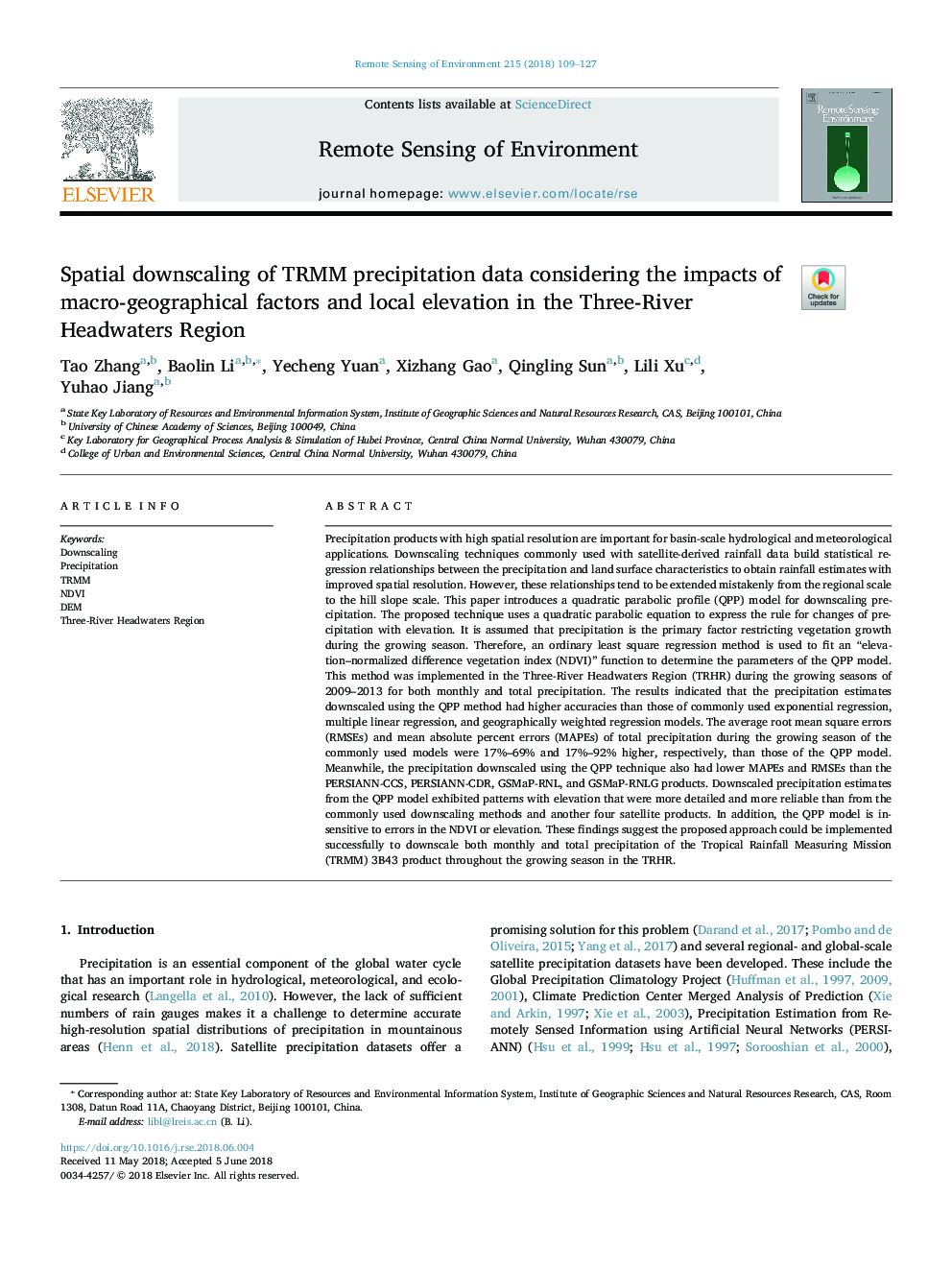| Article ID | Journal | Published Year | Pages | File Type |
|---|---|---|---|---|
| 8866465 | Remote Sensing of Environment | 2018 | 19 Pages |
Abstract
Precipitation products with high spatial resolution are important for basin-scale hydrological and meteorological applications. Downscaling techniques commonly used with satellite-derived rainfall data build statistical regression relationships between the precipitation and land surface characteristics to obtain rainfall estimates with improved spatial resolution. However, these relationships tend to be extended mistakenly from the regional scale to the hill slope scale. This paper introduces a quadratic parabolic profile (QPP) model for downscaling precipitation. The proposed technique uses a quadratic parabolic equation to express the rule for changes of precipitation with elevation. It is assumed that precipitation is the primary factor restricting vegetation growth during the growing season. Therefore, an ordinary least square regression method is used to fit an “elevation-normalized difference vegetation index (NDVI)” function to determine the parameters of the QPP model. This method was implemented in the Three-River Headwaters Region (TRHR) during the growing seasons of 2009-2013 for both monthly and total precipitation. The results indicated that the precipitation estimates downscaled using the QPP method had higher accuracies than those of commonly used exponential regression, multiple linear regression, and geographically weighted regression models. The average root mean square errors (RMSEs) and mean absolute percent errors (MAPEs) of total precipitation during the growing season of the commonly used models were 17%-69% and 17%-92% higher, respectively, than those of the QPP model. Meanwhile, the precipitation downscaled using the QPP technique also had lower MAPEs and RMSEs than the PERSIANN-CCS, PERSIANN-CDR, GSMaP-RNL, and GSMaP-RNLG products. Downscaled precipitation estimates from the QPP model exhibited patterns with elevation that were more detailed and more reliable than from the commonly used downscaling methods and another four satellite products. In addition, the QPP model is insensitive to errors in the NDVI or elevation. These findings suggest the proposed approach could be implemented successfully to downscale both monthly and total precipitation of the Tropical Rainfall Measuring Mission (TRMM) 3B43 product throughout the growing season in the TRHR.
Keywords
Related Topics
Physical Sciences and Engineering
Earth and Planetary Sciences
Computers in Earth Sciences
Authors
Tao Zhang, Baolin Li, Yecheng Yuan, Xizhang Gao, Qingling Sun, Lili Xu, Yuhao Jiang,
